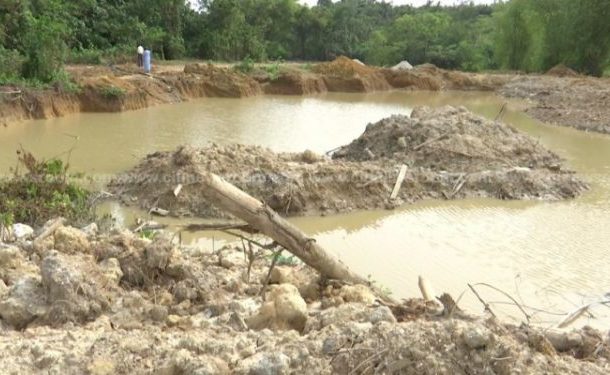This year’s World Environment Day celebration focuses on the restoration of ecosystems. This article seeks to underscore the problem of galamsey and how we can reduce illegal mining to restore our diminishing forest and water ecosystems. Undoubtedly, Artisanal and Small-scale Mining (ASM) play a crucial role in economic and national growth. The sector adds significantly to the GDP of Ghana as it contributes between 15-30% of metal and mineral production. In addition, ASM provides employment opportunities for millions of people in Ghana as the sector is largely driven by poverty.
It must be emphasized that the problem is not ASM itself, but uncontrolled or illegal ASM activities termed galamsey in Ghana. These are unregistered and unlicensed ASM operators. It is estimated that over 70-80% of miners in Ghana are not registered hence they operate illegally. The sector is highly informal and this has caused major environmental problems such as deforestation and pollution of our water bodies.
To correct the negative impact of galamsey on the environment, strong and deliberate actions are needed to protect ecosystems without any compromise. Forest reserves must be designated as red zones for mining, prohibiting miners from exploitation. Tree planting must be a priority in restoring depleting forests and areas around water bodies. Water resources are declining in quantity and quality and thus must be protected from mining activities. In fact, the present state of rivers around mining sites is an eyesore, as they are increasingly polluted with silt and chemicals.
These actions are the least we can do towards achieving sustainable solutions. Interestingly, as a nation, the fight against galamsey has been rather combative! This is evident from past initiatives such as the Inter-Ministerial Taskforce and Operation Vanguard which initially seemed effective in stopping galamsey but were eventually unsuccessful because they failed to consider all aspects of the problem.
The current approach, Operation Halt Galamsey, is even more daring and has taken extreme measures to stop miners from destroying our environment. However, from past evidence and happenings, the end of these aggressive initiatives is predictable. These solutions, though temporarily effective and necessary, are unsustainable in the long term and therefore need a deeper rethinking.
Ultimately, the way forward to the galamsey menace and restoring our degrading ecosystem is by revisiting the root of the problem. The informalities of the ASM sector increase galamsey activities which also serve as an important source of livelihood for many rural people. These are the facts and so more stakeholder engagement in the sector is crucial in finding appropriate solutions. Government has a greater role in decision-making and implementation; traditional leaders own the mining lands and are therefore key stakeholders; mining communities and miners are in the picture as well.
A long-term solution evolving from a strong collaboration with all stakeholders is necessary for addressing the environmental and social consequences of galamsey. Legalizing and formalizing the ASM sector is essential in reducing galamsey activities. Formalization means a streamlined licensing and decentralized procedure devoid of bureaucratic processes which encourage more miners to register and comply with regulations. The formalization of galamsey will ensure that illegal activities are regulated and controlled, to minimize the environmental and social consequences of galamsey.
The writer Seth Anim Owusu (PhD) is with the School of Natural and Environmental Sciences at the University of Environment and Sustainable Development, Somanya, Eastern Region
Source: citifmonline.com


Comments